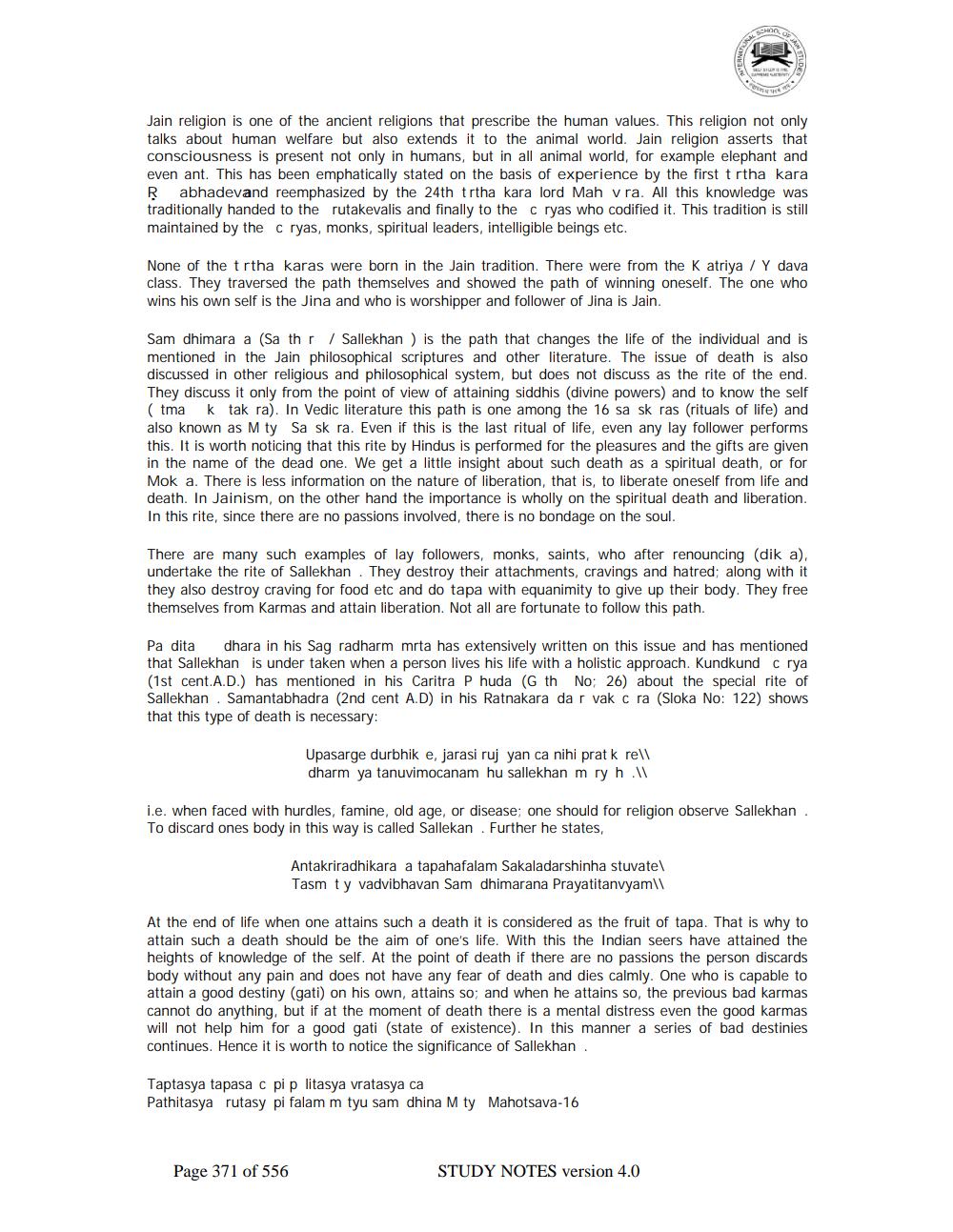________________
Jain religion is one of the ancient religions that prescribe the human values. This religion not only talks about human welfare but also extends it to the animal world. Jain religion asserts that consciousness is present not only in humans, but in all animal world, for example elephant and even ant. This has been emphatically stated on the basis of experience by the first t rtha kara Rabhadevand reemphasized by the 24th trtha kara lord Mah v ra. All this knowledge was traditionally handed to the rutakevalis and finally to the cryas who codified it. This tradition is still maintained by the c ryas, monks, spiritual leaders, intelligible beings etc.
None of the trtha karas were born in the Jain tradition. There were from the K atriya / Y dava class. They traversed the path themselves and showed the path of winning oneself. The one who wins his own self is the Jina and who is worshipper and follower of Jina is Jain.
Sam dhimara a (Sa thr / Sallekhan) is the path that changes the life of the individual and is mentioned in the Jain philosophical scriptures and other literature. The issue of death is also discussed in other religious and philosophical system, but does not discuss as the rite of the end. They discuss it only from the point of view of attaining siddhis (divine powers) and to know the self (tma k tak ra). In Vedic literature this path is one among the 16 sa sk ras (rituals of life) and also known as M ty Sa sk ra. Even if this is the last ritual of life, even any lay follower performs this. It is worth noticing that this rite by Hindus is performed for the pleasures and the gifts are given in the name of the dead one. We get a little insight about such death as a spiritual death, or for Mok a. There is less information on the nature of liberation, that is, to liberate oneself from life and death. In Jainism, on the other hand the importance is wholly on the spiritual death and liberation. In this rite, since there are no passions involved, there is no bondage on the soul.
There are many such examples of lay followers, monks, saints, who after renouncing (dik a), undertake the rite of Sallekhan. They destroy their attachments, cravings and hatred; along with it they also destroy craving for food etc and do tapa with equanimity to give up their body. They free themselves from Karmas and attain liberation. Not all are fortunate to follow this path.
Pa dita dhara in his Sag radharm mrta has extensively written on this issue and has mentioned that Sallekhan is under taken when a person lives his life with a holistic approach. Kundkund c rya (1st cent.A.D.) has mentioned in his Caritra P huda (G th No: 26) about the special rite of Sallekhan Samantabhadra (2nd cent A.D) in his Ratnakara dar vak c ra (Sloka No: 122) shows that this type of death is necessary:
Upasarge durbhik e, jarasi ruj yan ca nihi prat k re\\ dharm ya tanuvimocanam hu sallekhan m ry h.\\
i.e. when faced with hurdles, famine, old age, or disease; one should for religion observe Sallekhan. To discard ones body in this way is called Sallekan. Further he states,
Antakriradhikara a tapahafalam Sakaladarshinha stuvate\ Tasm ty vadvibhavan Sam dhimarana Prayatitanvyam\\
At the end of life when one attains such a death it is considered as the fruit of tapa. That is why to attain such a death should be the aim of one's life. With this the Indian seers have attained the heights of knowledge of the self. At the point of death if there are no passions the person discards body without any pain and does not have any fear of death and dies calmly. One who is capable to attain a good destiny (gati) on his own, attains so; and when he attains so, the previous bad karmas cannot do anything, but if at the moment of death there is a mental distress even the good karmas will not help him for a good gati (state of existence). In this manner a series of bad destinies continues. Hence it is worth to notice the significance of Sallekhan.
Page 371 of 556
Taptasya tapasa c pip litasya vratasya ca Pathitasya rutasy pi falam m tyu sam dhina M ty Mahotsava-16
STUDY NOTES version 4.0




